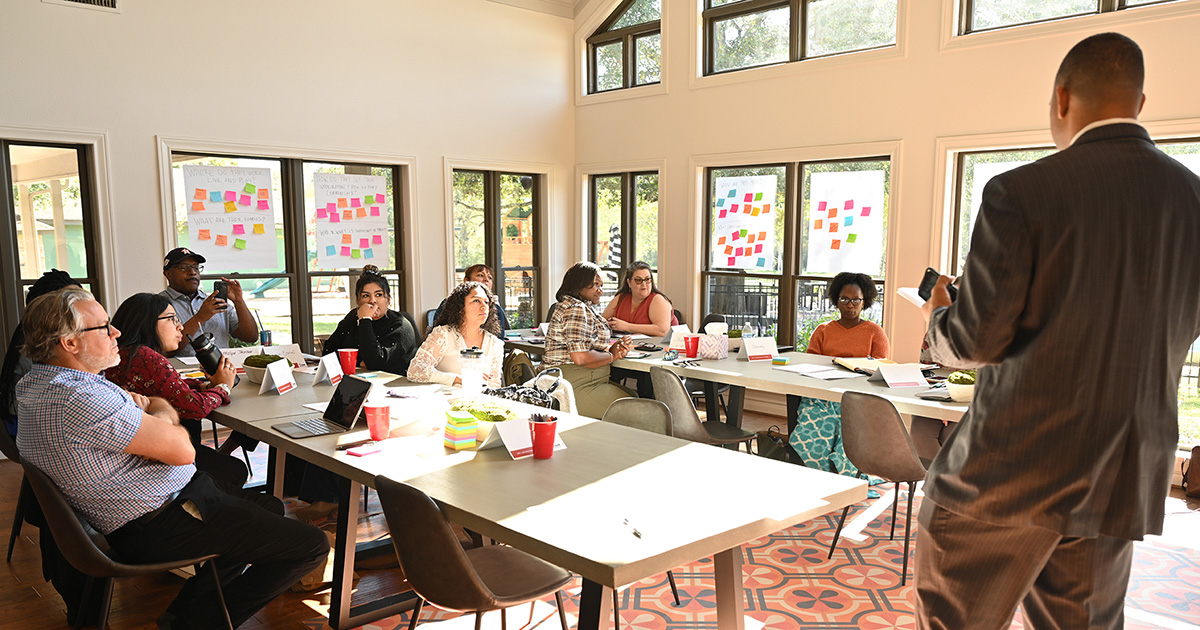Healthy family relationships can improve the quality of a child’s life. Recognizing this idea, Congress has since 2006 authorized funding for Healthy Marriage and Responsible Fatherhood services, which provide support for healthy adult and parent–child relationships. Mathematica’s large-scale evaluation project, Parents and Children Together (PACT), was designed to broaden our understanding of the effectiveness of these programs and contribute to a growing body of evidence to better understand what works in creating healthier relationships and more engaged fathers.
In this new video blog, PACT Project Director Sarah Avellar and Senior Researcher Quinn Moore share their perspective on the PACT project’s findings.
Sarah, responsible fatherhood programs didn’t affect all the outcomes examined. What can we learn from that?
Quinn, what kind of services are provided to couples in the healthy marriage program?
Previous research shows that stable family environments can improve a child’s life in many ways: health, education, future employment, and overall well-being. That’s why the Administration for Children and Families created the Healthy Marriage grant program in 2006—to encourage healthy marriages and relationships for families with limited income. Our study examined two programs that received grants in 2011. The programs served married and unmarried couples. The program’s main services were relationship skills classes that focused on topics such as improving communication and understanding partner’s perspectives. The programs also offered services designed to help people improve their job situation and advance in their careers as well as case management to help with needs such as housing, food instability, and medical assistance. In the Bronx, we studied the Supporting Healthy Relationships program run by University Behavioral Associates. In El Paso, Texas, we looked at the Healthy Opportunities for Marriage Enrichment program at the El Paso Center for Children.
Sarah, what can we learn about responsible fatherhood programs from these results?
Quinn, what about healthy marriage programs?
Our findings paint a positive picture of these programs. Couples took advantage of the program services, particularly the relationship skills classes. About a year after enrolling in the study, couples reported improvements in the quality of their relationships, including their relationship commitment and how affectionate they felt toward each other. The programs also improved how well couples felt they worked together in raising their children. One of the most striking findings is that the programs increased the number of couples who were married after one year—that’s a big deal. Increasing marriage rates is an important goal of these types of programs, but it’s unusual to find programs that actually achieve that goal. Although we found little impact on economic outcomes, the positive impacts on relationship success and co-parenting highlight successful program elements to build upon.
Sarah, what are the key takeaways?
Quinn, what are your closing thoughts on healthy marriage programs?
This study shows strong evidence that healthy marriage programs can help families with limited income by improving couples’ relationships and co-parenting and increasing marriage rates. But we have more work to do in figuring out how best to include employment services alongside healthy marriage services. We didn’t see much success in improving economic outcomes in this study, but combining services in this way is a relatively new idea. I’m interested to see if increasing the intensity and take-up rates for job and career advancement services might also lead to more evidence of program effectiveness. Similar to Sarah’s point about change, let’s build on what we’ve learned to make healthy marriage programs even more effective.
To learn more about this research, which Mathematica conducted on behalf of the U.S. Department of Health and Human Services’ Administration for Children and Families, Office of Family Assistance and Office of Planning, Research, and Evaluation, please visit the PACT project website.



